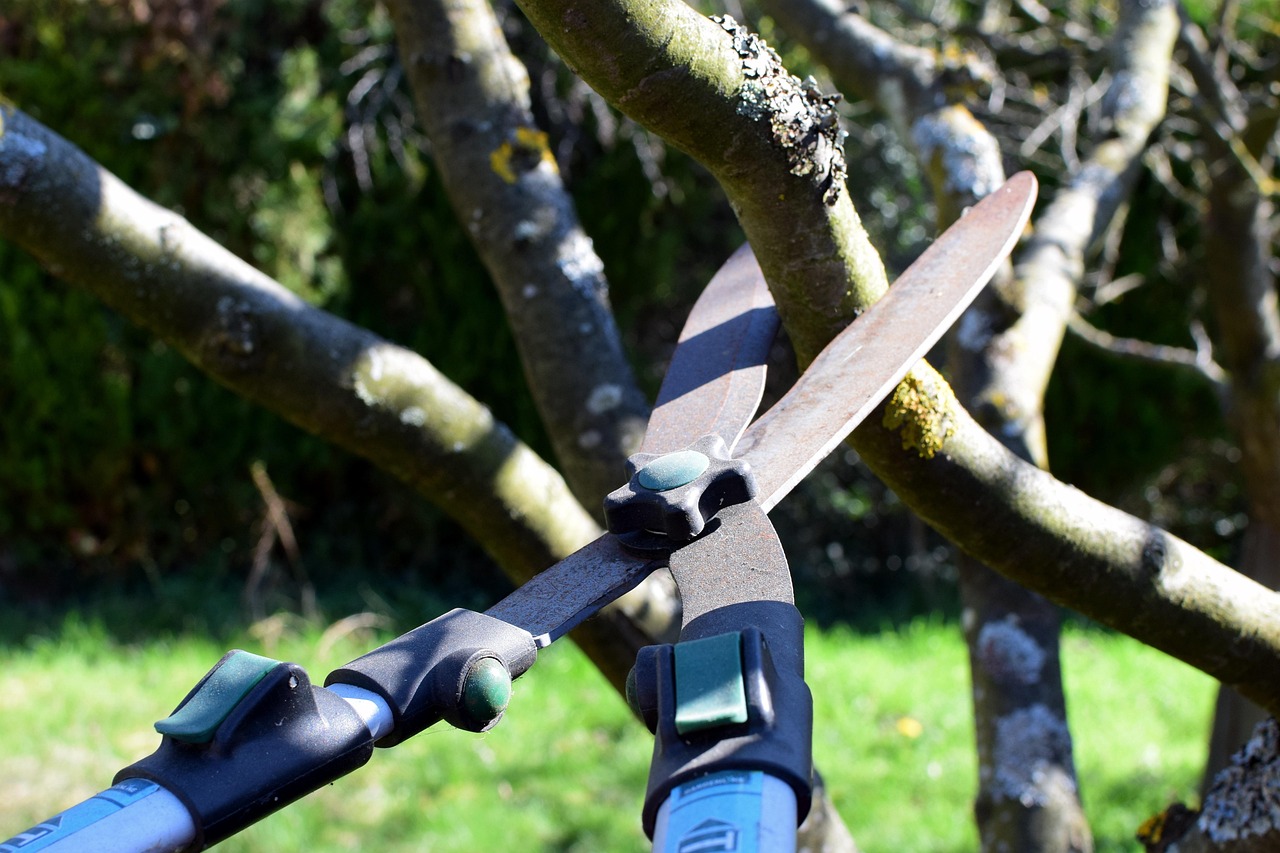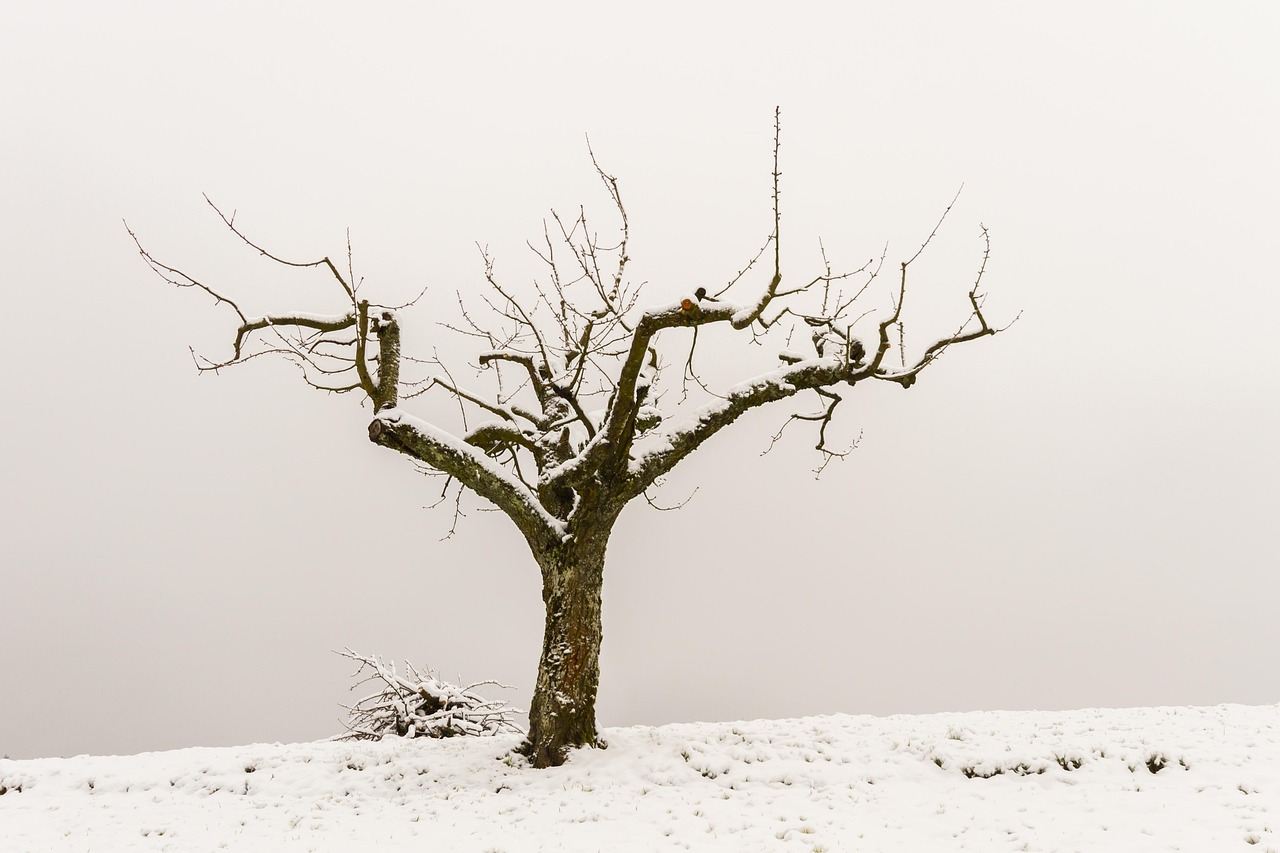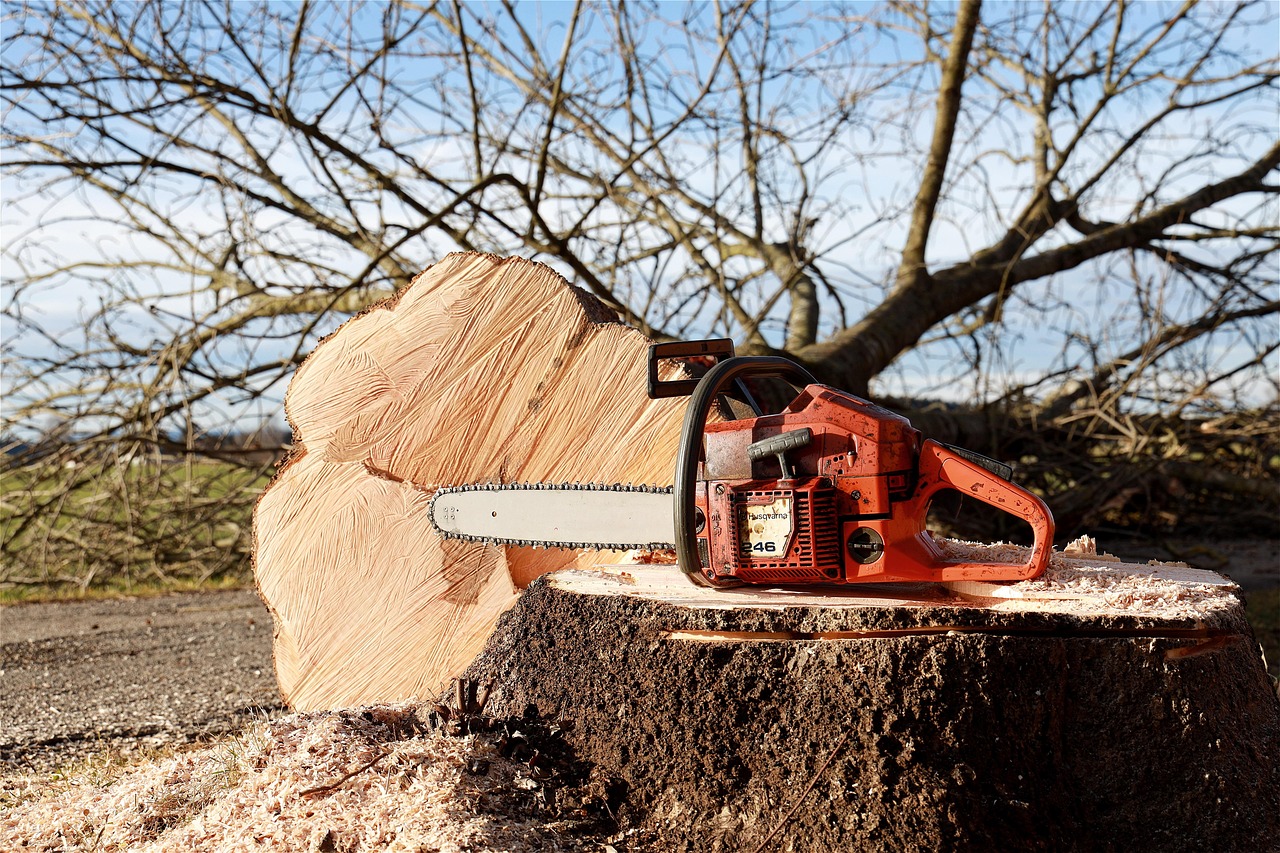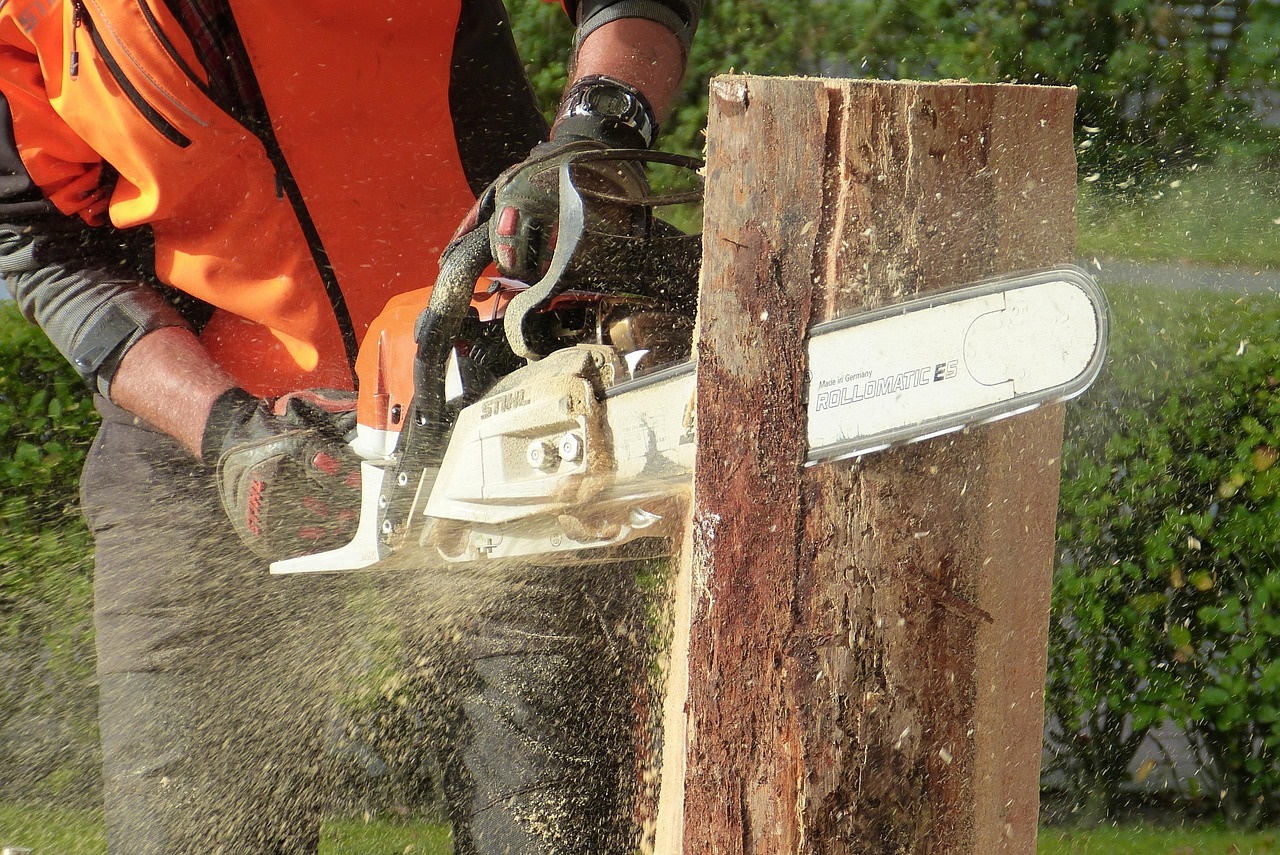A comprehensive final tree pruning checklist for every season includes assessing tree health, removing dead or diseased branches, shaping for aesthetics, and ensuring proper air circulation. In spring, focus on formative cuts; summer is for maintenance; autumn involves cleaning up; and winter is ideal for structural pruning. Always sanitize tools between cuts to prevent disease spread.
The final tree pruning checklist for every season includes assessing tree health, removing dead or diseased branches, and shaping trees to promote healthy growth. Specific timing and techniques vary by season, making it essential to adapt your approach throughout the year.
Tree pruning is a vital part of maintaining healthy trees. It helps to improve their overall structure, encourages growth, and prevents disease. Each season presents unique challenges and opportunities for tree care. Understanding the right techniques and timing can significantly impact your trees’ health and appearance.

Proper pruning not only enhances aesthetics but also supports tree longevity. Trees that are pruned correctly can better withstand environmental stresses. Additionally, they are less susceptible to pests and diseases. This checklist will guide you through the essential steps for effective tree pruning throughout the year.
Seasonal Pruning Overview
Different seasons require different approaches to tree pruning. Here is a breakdown of what to consider in each season:
| Season | Key Activities | Considerations |
|---|---|---|
| Winter | Remove dead or damaged branches, shape trees | Trees are dormant; easier to see structure |
| Spring | Light pruning after flowering, remove suckers | Avoid heavy pruning; focus on shaping |
| Summer | Thin out crowded branches, manage growth | Watch for pests; prune during dry weather |
| Fall | Prepare trees for winter; remove dead wood | Avoid heavy pruning to prevent stress |
By understanding these seasonal tasks, you can ensure that your trees remain healthy year-round. It’s also important to be aware of the specific needs of different tree species. Some may require more aggressive pruning than others, while certain types should only be pruned at specific times to avoid damage.

Winter Pruning Guidelines
Winter is an excellent time for pruning many types of trees. During this dormant period, trees conserve energy, which makes it easier to shape and remove unwanted branches. Here are some key tips for winter pruning:
- Assess tree structure: Look for any dead or damaged branches that need removal.
- Focus on the overall shape: Aim for a balanced canopy to promote even growth.
- Remove cross-branches: This prevents damage as branches rub against each other.
When pruning in winter, always use sharp tools to make clean cuts. This minimizes damage and promotes faster healing. Additionally, avoid pruning during extreme cold or wet conditions, as this can stress the tree.
Spring Pruning Guidelines
Spring is a time of growth and renewal for many trees. Light pruning can help shape trees and remove any dead branches. Here are some steps to follow:

- Wait until after flowering: Prune spring-flowering trees after they bloom to avoid cutting off new buds.
- Remove suckers: These are unwanted shoots that drain energy from the main tree.
- Thin crowded branches: This improves air circulation and sunlight exposure.
Be cautious not to over-prune in spring. Heavy pruning can shock the tree and inhibit growth. A light touch is often best during this active growing period.
Summer Pruning Guidelines
Summer pruning can help manage tree size and encourage healthy growth. It is essential to monitor trees for signs of stress or pest infestation during this time. Consider the following tips:
- Thin out dense areas: Reducing leaf density can improve sun exposure and air circulation.
- Control growth: Trim back overly vigorous shoots to maintain shape.
- Inspect for pests: Summer is a good time to check for infestations that may require additional care.
Summer pruning should be done cautiously. It is best to prune during dry periods to reduce the risk of disease spread. Always keep tools clean to avoid introducing pathogens into cuts.

Fall Pruning Guidelines
As trees prepare for winter, fall is an ideal time for certain types of pruning. Focus on maintaining health rather than heavy shaping:
- Remove dead or diseased branches: This helps prevent problems in the coming winter months.
- Avoid heavy pruning: Excessive trimming can stress trees before they enter dormancy.
- Clean up fallen leaves: This reduces the risk of pests and diseases overwintering in the debris.
By following these seasonal guidelines, you will ensure that your trees remain healthy and beautiful throughout the year. Understanding when and how to prune is key to successful tree care.
Essential Tools for Tree Pruning
Having the right tools is crucial for effective tree pruning. Each tool serves a specific purpose, and using the appropriate equipment can make the job easier and more efficient. Here is a list of essential pruning tools every gardener should consider:
- Hand Pruners: Ideal for small branches, these are perfect for making precise cuts.
- Loppers: These are used for thicker branches that hand pruners cannot handle.
- Pruning Saw: Useful for cutting larger branches, a pruning saw can handle thicker trunks.
- Hedge Shears: Best for shaping bushes and hedges, these help maintain neat edges.
- Pole Pruner: This tool extends your reach for high branches without using a ladder.
- Safety Gear: Always wear gloves, safety goggles, and protective clothing to prevent injuries.
Investing in quality tools can enhance your pruning experience. It is also important to keep your tools clean and sharp. Dull tools not only make the job harder but can also damage the tree.
Tree Pruning Techniques
Understanding various pruning techniques can greatly improve your results. Different methods are suitable for different types of trees and situations. Here are some common techniques:
Heading Back
This technique involves cutting back a stem or branch to a bud or lateral branch. Heading back encourages bushier growth and is often used on shrubs and young trees.
Thinning
Thinning removes entire branches to improve air circulation and light penetration. This technique is beneficial for mature trees that are becoming too dense.
Reduction
Reduction pruning shortens branches back to a lateral branch. This technique helps control the size of a tree without drastically changing its shape.
Cleaning
This involves removing dead, damaged, or diseased wood. Cleaning is essential for maintaining tree health and preventing the spread of disease.
Signs Your Tree Needs Pruning
Recognizing when a tree needs pruning is crucial for its health. Here are some common signs to look out for:
- Dead or Dying Branches: These can pose a safety risk and should be removed promptly.
- Pest Infestation: If you notice pests on your tree, it may be time to prune affected areas.
- Overcrowding: If branches are crossing or crowding each other, they may need thinning.
- Poor Growth: Trees that are not growing well may benefit from structural pruning.
- Weak Structure: Trees with multiple leaders or weak branches may need corrective pruning.
Seasonal Considerations in Tree Pruning
The timing of your pruning efforts can significantly impact the health and growth of your trees. Below are some seasonal considerations to keep in mind:
Winter Considerations
Pruning in winter is often ideal due to the trees’ dormant state. However, consider the following:
- Avoid pruning in extremely cold temperatures to prevent stress on the tree.
- Be mindful of frozen ground, which can make it difficult to maintain balance while cutting.
Spring Considerations
This season is about rejuvenation, but be cautious:
- Avoid heavy pruning of spring-blooming trees until after flowering.
- Monitor for sap bleeding in certain species; this is normal but can be minimized by timing your cuts correctly.
Summer Considerations
Summer pruning can help control growth, but be aware of heat stress:
- Avoid pruning during extreme heat waves; this can stress the tree further.
- Observe any sunburn on cut areas; proper technique can help minimize this risk.
Fall Considerations
As trees prepare for winter, fall pruning requires caution:
- Avoid heavy cuts late in the season as this can promote new growth that won’t harden off before winter.
- Focus on cleaning up debris and removing dead wood rather than shaping the tree.
Maintaining Tree Health After Pruning
The care of a tree does not end with pruning. Post-pruning maintenance is vital for recovery and growth. Follow these tips to maintain tree health:
- Watering: Ensure that the tree receives adequate water, especially during dry spells.
- Mulching: Apply mulch around the base to retain moisture and suppress weeds.
- Pest Monitoring: Keep an eye out for pests that may take advantage of the tree’s stressed state.
- Nutrient Supplementation: Fertilize if necessary to support recovery after heavy pruning.
Caring for your trees after pruning will help them thrive and recover quickly. It also sets the stage for healthy growth in the upcoming seasons.
Understanding Tree Growth Patterns
To effectively prune trees, it is essential to understand their growth patterns. Trees grow in cycles, and recognizing these cycles can help you determine the best times for pruning and the most effective techniques.
Growth Stages of Trees
Trees go through several growth stages, each requiring different care. Understanding these stages is crucial for effective pruning:
- Young Trees: In this stage, trees are establishing their structure. Pruning should focus on shaping and developing a strong central leader.
- Mature Trees: These trees require maintenance pruning to manage size and health. Thinning and cleaning are essential in this stage.
- Old Trees: As trees age, they may need special care. Focus on removing dead wood and ensuring structural integrity.
By recognizing these growth stages, you can tailor your pruning approach to meet the specific needs of your trees throughout their life cycle.
Common Mistakes in Tree Pruning
Even experienced gardeners can make mistakes when pruning trees. Being aware of common pitfalls can help you avoid them:
- Pruning at the Wrong Time: Each tree species has its own ideal pruning time. Researching this beforehand is crucial.
- Over-Pruning: Removing too much foliage can stress the tree and inhibit growth. Always prune conservatively.
- Neglecting Tree Health: Focusing solely on aesthetics can lead to ignoring underlying health issues.
- Using Dull Tools: Dull tools can tear rather than cut, leading to damage. Always ensure your tools are sharp.
Avoiding these mistakes will enhance your tree pruning efforts and contribute to overall tree health.
Tree Species and Their Pruning Needs
Different tree species have unique pruning requirements. Understanding these differences will help ensure that you are meeting the specific needs of each tree in your landscape. Below is a table that outlines common tree species and their pruning needs:
| Tree Species | Best Pruning Time | Special Considerations |
|---|---|---|
| Maple | Late winter or early spring | Avoid heavy pruning; sap bleeding is normal but minimal cuts are preferred. |
| Oak | Late winter | Avoid pruning in spring to prevent oak wilt disease. |
| Crape Myrtle | Late winter or early spring | Prune to shape; remove spent flowers for better blooms. |
| Pine | Late spring or summer | Avoid heavy pruning as it can stress the tree; only remove dead branches. |
| Cherry | Late summer or early fall | Heavy pruning can lead to disease; focus on light shaping. |
This table highlights the importance of understanding species-specific needs when planning your pruning strategy. Knowing when and how to prune each type of tree will enhance their health and beauty.
The Role of Tree Pruning in Landscape Design
Tree pruning is not only essential for maintaining tree health, but it also plays a significant role in landscape design. Here are some ways pruning impacts your landscape:
- Aesthetic Appeal: Pruned trees provide a more polished and manicured look to your landscape.
- Improved Visibility: Properly pruned trees can enhance sightlines, allowing you to appreciate the layout of your garden or yard.
- Controlled Growth: Pruning helps control the size of trees, preventing them from overgrowing into unwanted areas.
- Increased Sunlight: Removing excess foliage allows more sunlight to reach the ground, promoting healthy growth for other plants in the vicinity.
The impact of tree pruning on landscape design cannot be overstated. Thoughtful pruning enhances not only the beauty of trees but also the overall environment in which they exist.
Caring for Stressed Trees
Sometimes, trees can become stressed due to environmental factors or improper care. Recognizing the signs of stress is crucial for timely intervention. Here are some signs that a tree may be under stress:
- Leaf Discoloration: Yellowing or browning leaves may indicate nutrient deficiencies or water issues.
- Pest Infestation: Stressed trees are more susceptible to pests, which can worsen their condition.
- Poor Growth: If a tree is not growing as expected, it may be stressed and require additional care.
If you notice signs of stress, consider taking action by adjusting watering practices, applying fertilizer, or consulting an arborist for professional advice.
The Importance of Professional Help
While many homeowners can manage basic tree pruning tasks, some situations require professional assistance. Here are scenarios where hiring a certified arborist is advisable:
- Large Trees: If a tree is too large or tall, it may be unsafe to prune without professional equipment and expertise.
- Diseased Trees: Trees showing severe signs of disease may require specialized knowledge to address health concerns.
- Tree Removal: If a tree poses a hazard or needs removal, professionals should handle it to ensure safety.
Engaging a professional arborist can provide peace of mind and ensure that your trees receive expert care, enhancing their longevity and health.
Seasonal Considerations for Tree Pruning
Pruning techniques, tools, and strategies can vary significantly from season to season. Understanding how to adapt your approach is essential for achieving optimal results. Beyond the general guidelines discussed earlier, consider these additional seasonal insights:
Environmental Factors
Each season brings unique environmental conditions that influence tree health and growth:
- Winter: Cold temperatures can cause stress. It’s essential to monitor trees for signs of frost damage after pruning.
- Spring: As trees awaken from dormancy, they may require extra care to support fresh growth and blooming.
- Summer: Hot temperatures can lead to rapid drying. Regular watering and monitoring for pests become crucial.
- Fall: Trees prepare for dormancy. This is an excellent time to assess overall tree health before winter sets in.
Soil Conditions
The condition of the soil plays a vital role in tree health. Proper soil management can enhance the impact of your pruning efforts:
- Soil Testing: Conduct tests to determine nutrient levels and pH balance, ensuring optimal growth conditions.
- Amending Soil: Based on testing results, consider adding organic matter or fertilizers to improve soil quality.
- Drainage: Ensure that water drains well from around the tree roots to prevent root rot.
Educating Yourself About Tree Care
Knowledge is one of the most valuable tools in tree care. Continuous learning about tree biology, species-specific needs, and best practices is crucial. Here are some suggestions for expanding your knowledge:
- Workshops and Classes: Attend local workshops on tree care and pruning techniques offered by gardening clubs or extension services.
- Books and Resources: Read books or online articles that focus on arboriculture and tree maintenance.
- Networking: Connect with local arborists or tree care professionals to gain insights and advice.
Educating yourself can empower you to make informed decisions about tree care, leading to healthier trees and a more beautiful landscape.
The Role of Technology in Tree Care
Technology has transformed how we approach tree care. Utilizing modern tools and applications can enhance your pruning strategy:
- Drones: These can be used for aerial assessments of large landscapes, helping identify trees that need attention.
- Mobile Apps: There are various applications available that provide information on tree species, growth patterns, and even pest identification.
- Sensors: Soil moisture sensors can provide real-time data on soil conditions, aiding in timely watering and care.
Incorporating technology into your tree care routine can help you make smarter decisions and improve the overall health of your trees.
Final Thoughts
Tree pruning is a fundamental aspect of maintaining a healthy landscape. By understanding the seasonal requirements, applying the right techniques, and utilizing appropriate tools, you can ensure your trees thrive throughout their lifecycle. Recognizing when to seek professional assistance is also important for addressing complex issues that may arise.
As you embark on your tree care journey, remember that each tree is unique and may require specific attention based on its species and environment. Observing your trees regularly and adapting your approach will lead to a healthier, more vibrant landscape.
In summary, effective tree pruning involves a combination of knowledge, skill, and careful observation. With the right practices in place, you can enjoy the beauty and benefits that healthy trees bring to your property for years to come.
Your commitment to tree care not only enhances the aesthetic appeal of your surroundings but also contributes positively to the environment. Healthy trees play a vital role in air quality, biodiversity, and overall ecosystem health. By investing time and effort into proper pruning and care, you are making a significant contribution to your community’s natural beauty.
